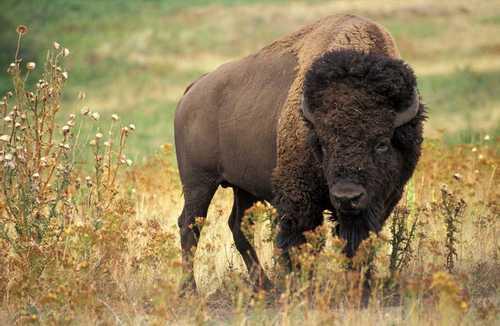Bison vs Bufflo
It’s easy to understand why people confuse bison and buffalo. Both are large, horned, oxlike animals of the Bovidae family. There are two kinds of bison, the American bison and the European bison, and two forms of buffalo, water buffalo and Cape buffalo . However, it’s not difficult to distinguish between them, especially if you focus on the three H’s: home, hump, and horns.
Contrary to the song “Home on the Range,” buffalo do not roam in the American West. Instead, they are indigenous to South Asia (water buffalo) and Africa (Cape buffalo), while bison are found in North America and parts of Europe. Despite being a misnomer—one often attributed to confused explorers—buffalo remains commonly used when referring to American bison, thus adding to the confusion.
Another major difference is the presence of a hump. Bison have one at the shoulders while buffalo don’t. The hump allows the bison’s head to function as a plow, sweeping away drifts of snow in the winter. The next telltale sign concerns the horns. Buffalo tend to have large horns—some have reached more than 6 feet (1.8 meters)—with very pronounced arcs. The horns of bison, however, are much shorter and sharper. And, if you want to throw a B into the mix, you can check for a beard. Bison are the hipsters of the two animals, sporting thick beards. Buffalo are beardless.
1
13 reads
IDEAS CURATED BY
Dana Alissa's ideas are part of this journey:
Learn more about scienceandnature with this collection
The importance of physical activity
The role of genetics in lifespan
How to maintain a healthy diet
Related collections
Similar ideas
1 idea
What is the difference between noodles and pasta?
cooking.stackexchange.com
4 ideas
1 idea
Uncommon Phobias & Extraordinary Fears |
louislaves-webb.com
Read & Learn
20x Faster
without
deepstash
with
deepstash
with
deepstash
Personalized microlearning
—
100+ Learning Journeys
—
Access to 200,000+ ideas
—
Access to the mobile app
—
Unlimited idea saving
—
—
Unlimited history
—
—
Unlimited listening to ideas
—
—
Downloading & offline access
—
—
Supercharge your mind with one idea per day
Enter your email and spend 1 minute every day to learn something new.
I agree to receive email updates
